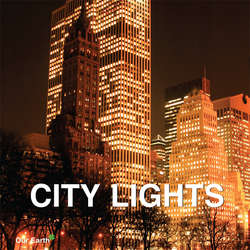Читать книгу City Lights - Victoria Charles - Страница 4
Africa
ОглавлениеAswan after sunset – view over the Nile, Aswan, Egypt.
Durban, South Africa.
Djemaa el Fna, Marrakech, Morocco.
Djemaa el Fna square was constructed in the 11th century at the entrance to the medina, the historic heart of Marrakech. Its name, which means ‘assembly of the dead’, dates back to the square’s former incarnation as a place where the heads of people executed by order of the sultan were publicly displayed. Situated between the souq and the Koutoubia Mosque, whose minaret is illuminated at night by a cloak of lights, Djemaa el Fna is undeniably a landmark of the city.
From dawn until dusk, the market swarms, a joyous bazaar where tourists and locals mix. In the square cluster stands selling fresh fruit, juice and traditional dishes; water carriers, snake charmers and children playing with monkeys also gather in the space. In the late afternoon and evening, Djemaa el Fna lights up. The lights come on and artists that were absent before enter the scene, filling the square with dancers, narrators, musicians and poets.
Essentially the nerve centre of Marrakech, offering a magnificent concentration of regional cultural traditions, Djemaa el Fna was appointed as an indispensable cultural heritage site by UNESCO in 2008.
Union buildings in Pretoria, South Africa.
Hassan II Mosque, Casablanca, Morocco.
Pyramid of Khafre, the Great Sphinx and the Great Pyramid of Giza (also called the Pyramid of Cheops), Giza, Egypt.
Johannesburg, South Africa.
Johannesburg is the largest city in South Africa and situated in the wealthiest province of the country, Gauteng. A sprawling urban area, Johannesburg – called Jo’burg by many – is a rapidly growing city that is constantly undergoing development, as it is the centre of the country’s commercial, financial, industrial and mining enterprises.
The Hillbrow Tower, visible to the far left of this photograph, is a telecommunications tower built in Hillbrow, a suburb of Johannesburg, between 1968 and 1971. With its height of nearly 270 metres, it dominates Johannesburg’s skyline and has become a landmark of the city, evident in the use of the tower as part of the ‘b’ in the city’s official logo.
Mponeng Gold Mine, Carletonville, South Africa.
Nelson Mandela Bay Stadium, Port Elizabeth, South Africa.
Hammamet, Tunisia.
Rich with a lively history, Hammamet was founded in Roman times. As evinced by the remnants of thermal baths and the etymology of its name – the plural of ‘hammam’ in Arabic, meaning ‘baths’ – Hammamet was long considered a thermal town. Sparkling during ancient times, the city passed through a dark period during the Middle Ages and reemerged into the light during the modern era.
At the end of the 19th century, by accepting developments such as electricity, Hammamet opened itself up to modernity. Since then, a number of artists, writers, poets and painters, including Gustave Flaubert, Oscar Wilde, August Macke and Paul Klee, have been charmed by the beauty of the city and turned it into a highly sought-after holiday resort. In the 1920s, Romanian millionaire Georges Sebastian built a luxurious villa in Hammamet, establishing the reputation of the city. As it became a seaside resort and grew in popularity, Hammamet continued to attract personalities like Winston Churchill and Dwight Eisenhower. After World War II, during which Sebastian’s villa had served as the general centre of operations for German Field Marshal Erwin Rommel, the estate was sold and converted into a cultural centre that now welcomes the annual International Festival of Hammamet.
Grand Mosque, Sousse, Tunisia.
Cape Town, South Africa.
Sharm el-Sheikh, Egypt.
Located at the border between Africa and Asia, Sharm el-Sheikh is a small city on the tip of the Sinai Peninsula in Egypt.
Recently become a popular tourist destination, Sharm el-Sheikh benefits from the cultural and historical richness of the region. Originally a fishing village on the coast of the Red Sea, a body of water whose beauty is an irresistible attraction to tourists, Sharm el-Sheikh also profits from a temperate climate, with temperatures remaining between 16 and 35 °C throughout the year. The city’s hotels and nightlife have greatly developed with the influx of visitors, with a number of new buildings accommodating trendy bars and nightclubs that keep the city lively and exciting.
Adding to its international appeal, Sharm el-Sheikh has welcomed several international peace conferences, earning the nickname ‘City of Peace’.
